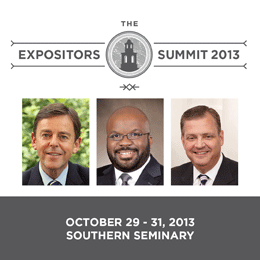Do you know what I’m trying to accomplish with The Bible’s Big Story?
I want you to win the hearts of your children.
I want you to win them through the time you spend with them.
I want you to start when they’re so small they can’t yet climb off your lap and crawl around.
I want you to read to them, and I want you to read to them about the highest and most important things: the Lord, the gospel, the true story of the world in the Bible.
So more than just winning their hearts, I want you to win your kids to the Lord. My prayer is that the big story of the Bible will capture their imagination, that the high King would lay claim to their allegiance, that they would trust him from deepest recess of soul.
I’m trying to help parents–and I really have dads in my crosshairs–obey Deuteronomy 6:7. The ESV translates that verse as follows: “You shall teach them [these words that I command you today, v. 6] diligently to your children, and shall talk of them when you sit in your house, and when you walk by the way, and when you lie down, and when you rise.”
That phrase “you shall teach them diligently” could also be rendered “you shall repeat them constantly.”
This verse calls fathers to do two things: 1) repeat the Bible constantly to their children, and 2) discuss it with them.
That’s your basic recipe for family discipleship, and I’m trying to help you do it by starting when your children are sitting there on your lap looking at picture books with you.
[Here’s a longer discussion of family discipleship interpreting Deuteronomy 6 and Proverbs: “That the Coming Generation Might Praise the Lord,”].
Make no mistake about it: Satan is prowling around like a lion wanting to devour your child. You can’t outsource their discipleship. They need you. Particularly you, Dad.
The other day my wife was telling me how it’s harder for my kids to get to sleep when something has me out of the house and I’m not part of the bedtime routine of family devotions. Without me there, she finds the kids to be more fussy and fearful. She said to me: “Don’t underestimate daddypower.”
Dad’s, I’m calling you to step up.
I’m calling you, fathers, to read to your kids.
I’m calling you to be a man, to take the responsibility God has placed at your feet in the Scriptures.
This is bigger than any free throw you ever shot, bigger than any at-bat with two outs in the bottom of the ninth with the winning run in scoring position. This is more important than twitter and blogs and books and news. We’re talking about your kids.
We’re talking about whether you will lay the foundation when they’re small that will put you in position to be heard and heeded when you start warning them against the snares of the devil–snares of porn and predators and pushers. How do you lay that foundation? By establishing yourself as their father in the formative years. Before they start walking, you’re holding them, teaching them what the world is–what it’s for, what life is about.
Step up, dads. For the sake of your children, for the respect of your wife, for your own Christlikeness, for the glory of God, for the church in the generations to come. By all that you love, by all that is holy, in the name of the Lord Jesus, let us take up the solemn charge to train our kids in the fear and admonition of the Lord. Disciple your children.
Play the man. Repeat the Bible constantly to your kids and discuss it everywhere you go, when they get out of bed in the morning, when they go to bed at night, when at home, when out and about (cf. Deut 6:7).
Their souls depend upon it, and if you’re in ministry, your qualification depends upon it.
So how can you use The Bible’s Big Story in your efforts to fulfill the role God has given to you and play the man? (cf. 1 Cor 16:13–14)
Here are some suggestions, following the basic outline of Deuteronomy 6:7, to 1) Repeat and 2) Discuss, and I’m adding the third step of 3) Do It Yourself to get at the idea that is clearly the goal of the repetition and discussion Moses prescribed in Deuteronomy 6:7–living out the Bible. Moses wasn’t calling for Hebrew households to become seminar rooms or discussion forums. He wanted fathers to repeat the Bible to their children and discuss its meaning with them so that they would live out faith and obedience for God’s glory.
Here’s how you can use The Bible’s Big Story to lay the foundation of you being the most influential person in your child’s life. Here are some steps you can take on the path of winning their hearts:
Repeat
1. Read the poem straight through. On each page there is a rhyming couplet and a Bible verse, and this first recommendation is to skip the Bible verses and just read the rhyming couplets of this book. These rhymes comprise one unified poem. By reading the whole poem over and over straight through, the idea is for both you and your little one to find that you have the thing memorized. The poem is intended to be a high-level overview of the whole story (thus its title, The Bible’s Big Story), and my hope is that it will serve as a roadmap for Bible reading.
So read the poem straight through. This is how you read most children’s books, and in this recommendation I’m encouraging you to read the poetry by itself and save the Bible verses on each page for other kinds of trips through the book.
2. Repeat. Maybe your experience is like mine, and you find yourself saying to your toddler: “we just read that book.” On those second and third readings, go more slowly through the pages, and these are the times to read the verses.
Discuss
3. Got a toddler and other kids under the age of 10? We do, and often the older ones gather round as we read to the younger. When this starts happening, don’t just read, discuss. Ask the older kids to tell you more about the pictures and the stories they depict.
4. Talk about what happens between the lines. This little book is only 24 pages. Most of the Bible’s events and teachings are not depicted. Ask your child if they know what happened before or after what’s on a particular page. Let the things depicted in this book be your landmarks, and more and more sketch in the details between the landmarks.
Do It Yourself
These suggestions can be adapted to the age and aptitude of your child.
5. Assuming that you have access to a photocopier (three in one printers are everywhere these days), photocopy a page in black and white and let your child use it as a coloring page.
6. Have your child reproduce the pictures in the book using tracing paper.
7. The next step after tracing paper is of course for your kids to draw their own versions of the pictures in the book, whether reproducing the book’s pictures or doing the scene a different way, or the previous event . . . you get the idea.
8. At our family gatherings, the cousins sometimes do drama presentations. Why not use The Bible’s Big Story for the family (or church) Christmas drama your kids produce. Have them memorize the lines and say them as they act out the story. Get costumes. Make it a yearly tradition at Christmas or easter. Go whole-hog (even if you’re an LSU fan).
9. Are there families of small children whose parents you’re shepherding or discipling? At $4.99, this is a pretty affordable discipleship tool, birthday gift, or party favor. Let me assure you: my goal is not selling more copies or making a name for myself. I want to love God and neighbor. I want God to be glorified as you win the hearts of your kids, as your friends win the hearts of their kids, as fathers establish themselves in the lives of their kids by obeying Deuteronomy 6:7, as families grow in their understanding of the Scriptures together, as disciples are made of all nations.
10. Are there unbelieving family members, friends, or others who sometimes read to your kids? Put this book on the top of the pile. Unbelievers who read this book will be exposed to the big story of the Bible and an exhortation to trust the Lord Christ. I hope and pray The Bible’s Big Story can be a natural evangelistic experience for your unbelieving neighbors, friends, or family members.
These are of course, merely suggestions, and they’re not exhaustive. Have some other ideas? Please do share them in the comments (or post them somewhere–I’d love to know to your thoughts. . .). The main thing is for us to know God by knowing the Bible, and helping you and your kids do that is what I’m after in The Bible’s Big Story.
Look around.
Darkness clouds the horizon.
The culture grows more and more hostile to Christians and Christianity.
Take action.
Redeem the time.
Disciple your kids.
Dads, your wife and children are yours to protect and lead. Play the man.

